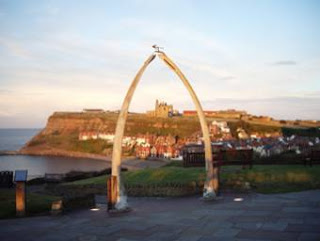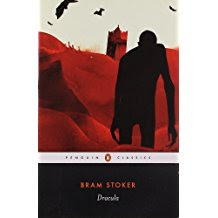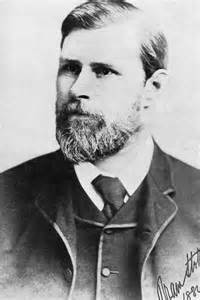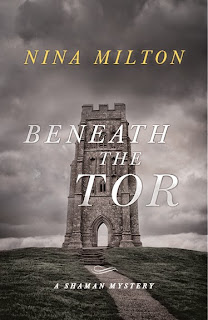Praised by Alice Munro (whose name is on the back cover), Do Not Say We Have Nothing earned Madeline Thien the Canadian Authors’ Association Award for most promising Canadian writer under the age of 30. Then went on to win a Carnegie Medal, the Scotiabank Prize and the Stanford Travel Writing Award (Wikipedia 2016), but although shortlisted for The Man-Booker and the Bailey’s Prize, it didn’t win. I was shocked. The reviews I’d read suggested a forgone conclusion…It speaks to the humanity that continues even in the harshest, most self-destructively paranoid conditions, and it shows how the savagery of destroying culture comes hand-in-hand with the destruction of human bodies. For this reason alone, I hope it wins the Man Booker prize…(Boland 2016)
I found it compelling, important. I thought a close second read would determine why it hasn’t gained a glittering crown. Long, with a rambling, fractured narrative, covers many aspects of the Maoist revolution. The story is told in sewn-on patches, revealed slowly with huge difficultly, almost like a labour. This immediately felt right…as if structure and style represent the dreadful hardships the Chinese people experienced.
Do Not Say We Have Nothing opens in Vancouver in 1990. Marie’s father has killed himself in Hong Kong jumping from a high building, and Marie (also called Li-Ling) and her mother take in a young woman from China. Ai Ming arrives at their home without ‘papers’. 10 year-old Marie is enamoured by the teenager, but ask as she might, cannot discover what has happened to her. Marie tries to get closer by showing the girl something that belonged to her dead father…
The notebook with her father’s writing, the Book of Records, was easy to find. I picked it up, knowing it would please her. But when I offered the notebook to Ai-ming, she ignored me.
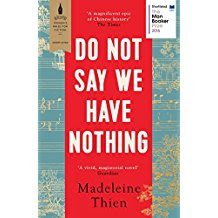 I tried again. “Ma told me it’s a great adventure, that someone goes to America and someone else goes to the desert. She said that the person who made this copy is a master calligrapher.”
I tried again. “Ma told me it’s a great adventure, that someone goes to America and someone else goes to the desert. She said that the person who made this copy is a master calligrapher.”Ai-ming emerged from her coat. “It’s true my father had excellent handwriting, but he wasn’t a master calligrapher. And anyway, no matter how beautiful the Book of Records is, it’s only a book. It isn’t real.”
“That’s okay. If you read it to me, I can improve my Chinese. That’s real.”
She smiled. After a few moments of turning pages, she returned the notebook to the bedcover, which had become a kind of neutral ground between us. “It’s not a good idea,” she said. “This is Chapter 17. It’s useless to start halfway, especially if this is the only chapter you have.”
“You can summarise the first sixteen chapters. I’m sure you know them.”
“Impossible!” But she was laughing…(Thien 2016)
Politics, time, place and generations of characters are intertwined within the story, and echoed in the handwritten ‘Record’ of the extract above. It was like reading a half-lost Chinese legend, or a guide to survival under hopeless oppression. I loved the way stories and music are powerful threads connecting the lives and times of a Chinese family. Often, I felt I was reading Dostoyevski. I agreed it was…a beautiful, sorrowful work…the mind is never still while reading it…(Senior 2016)
At the core of the story is a true event. In 1968, the director of Shanghai Conservatory of Music, He Luting, was dragged from his office by Red Guards, physically abused in front of TV cameras and accused of ‘non-revolutionary thinking’ over his approbation of Western classical music. He did not confess, as most did, instead, crying out, “shame on you for lying!” (Isobel Hilton 2016). Thien incorporates this into her story.
“I have this idea that … maybe, a long time ago, the Book of Records was set in a future that hadn’t yet arrived,” one characters says (Thien 2016). The covert record, written by hand and passed secretly from writer to writer, allows them to express what they cannot tell. Almost entirely unrevealed on the page, I thought the notebook was a metaphor for the half-lost history of three generations.
Bach’s Goldberg Variations (always played by pianist Glenn Gould), becomes the score in our head. – the words echoing the complex counterpoints in the music. It’s a symbol, I believe, of how brilliant creativity is suppressed and punished in the Cultural Revolution (CR), but also of how music is universal. Early in the novel, Marie says…I was drawn toward it, as keenly is if someone were pulling me by the hand. The counterpoint, holding together composer, musicians and even silence, the music, with its spiralling waves of grief and rapture…(Thien 2016) She might be talking about the story she’s about to unfold.
 |
| Tieananmen Square in the 80s |
Marie narrates short sections of the novel as an adult, in the present day. She’s become a mathematics professor, which links with the contrapuntal nature of music and story. She’s still seeking the truth about her family’s history. Meanwhile, the lives of the families of two sisters over fifty years of Chinese revolution is revealed in a wide-ranging viewpoint, allowing one after another of the characters to catch and take up the tale. It’s never clear who is in charge of this omniscient-like third person. It might be Ai Ming, remembering all she knows of the Book of Records, even adding to it. Maybe this is all Marie’s story, told at the end of her quest. Or perhaps the overarching view is Thien’s herself.
I became intimately involved with these lives, the ambiguities of the story, and the glorious sounds of music; Chinese and European, violin and piano. From Vancouver we go back to the colour and gaiety of the 1940’s, where two teenaged sisters entertain by singing in provincial teahouses. We follow Big Mother Knife and Swirl through the land reforms, re-educations, the arrival of the Red Guard and the Cultural Revolution, and on, to the protests at Tiananmen Square in 1989.
Big Mother has three children, including a boy called Sparrow, who becomes a musical prodigy. Swirl and her husband, Wen the Dreamer, have a girl, Zhuli. Wen is the ‘master calligrapher’ and principle contributor to the Book of Records. He and Swirl are caught up in the punishments devised to expose counter-revolutionaries… anyone deviating from the norm of communist orthodoxy. They are tortured and given hard labour in a desert area of China, where they barely survive. The young Zhuli is sent to find her aunt in Shanghai. She takes up the violin under the influence of her cousin, the shy composer, Sparrow, and is destined for great things, until the Cultural Revolution rises up. At the Conservatory, Zhuli becomes unable to cope with the humiliations, brain-washings and destruction of music and musical instruments….students began writing essays asking, “What good is this music, these empty enchantments, that only entrench the bourgeoisie and isolate the poor?”(Thien 2016). Some musicians form a clandestine resistance group, and this seems to finally topple Zhuli. She kills herself.
In Moa’s China, history is manipulated or suppressed unless it toes the party line. And so, from the safety of Canada, Thein has attempted to tell the entire truth, using music as her theme. It feels off-key, literally, to write about musicians when so much of the history is political. They quietly go about their business of writing, playing and teaching music. They have brilliant minds, but are quiet people, not necessarily politically articulate.
Sparrow becomes deeply intimate with a piano student, Kai, whose family didn’t survive the starvation times of the Great Leap Forward. But Sparrow is unable to consummate their love, perhaps because of his timid reserve, perhaps due to the shock of Zhuli’s death. Kai is determined to live whatever the cost. Ruthlessly, he compromises his art and prospers as a musician, lauded by the establishment, while Sparrow, who cannot dishonour classical music, is forced to leave the Conservatory, reassigned to work in a radio factory for thirty years.
And what of the Book of Records? In an interview, Thien explains…It’s a book with no beginning, no middle and no end, in which the characters are seeing an alternative China where they recognise mirrors of themselves and which they write themselves into.” She is speaking literally as well as metaphorically. “The act of copying is different in China because part of the art of calligraphy is that you learn to write as the masters did. It’s a lot about breath and pressure and line. (Armistead 2016)
When I surfed the net, I discovered the notebook is an allusion to China’s most celebrated work of pre-history, Shiji or the Historical Records. Like the novel and the notebook, the Shiji is non-chronological, fractured…overlapping units that interpret rather than document. Completed in 91BCE it was kept hidden for fear of the wrath of an emperor who had had its author, Sima Qian, the ‘grand astrologer’ castrated. (Vioatti 2014).
I followed one family for sixty years, across vast Chinese landscapes, puzzling about the ‘book of records’, carrying Baroque music in my head through 450 pages of traumatic experiences and moral complexities. Although it’s not an easy book to read, and I wasn’t alone in finding I always wanted to read on… Thien's reach—though epic —does not extend beyond her capacity, resulting in a lovely fugue of a book…(Chalfant 2016).
China has always been a dangerous place to state the truth, rather than toe the line. Then chose characters with great gifts, extraordinary yet quite ordinary, who fall foul of the absurd doctrines of a regime. Through them, I understood the consequences of Mao’s revolution on both the Chinese national identity, and the personal identities of its people.
The duplicitous Kai finally agrees to help Sparrow’s daughter, Ai-Ming, to escape China, but soon after Marie meets her, Ai Ming disappears into the USA. Marie is still searching at the end of the book. As if both girls, mirror-images of the girls who sang in the teahouses, resonate what the previous generation had to go through; to disappear emotionally or physically, or to wander, in search of reasons and identity. There’s no final answers, especially as to why it did not win the Booker. That is a puzzle as great as the Book of Records.

 Log in with Facebook
Log in with Facebook 
 Bram Stoker's Dracula
Bram Stoker's Dracula